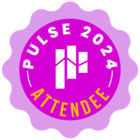Hey everyone, Adam here, following up from the webinar I hosted earlier this week.
Hopefully the recording is posted soon, but I want to thank the Gainsight team for partnering on this and inviting me, and to all of you who attended! There were a couple questions I didn’t get to answer, so I’ll follow up here:
Q: It seems like some of the solutions you provided (ex Optiverse) may have utilized external software. Do you have any recommendations for software to invest in to support this infrastructure or specific things you recommend looking for when reviewing external software?
A: Usually creating solutions like this requires a few different integrated solutions (hopefully this becomes simpler in the future!) but typically what’s involved is:
- A help center / knowledge base CMS product (ex. Zendesk, Intercom, Salesforce Knowledge - all the examples I showed were on Zendesk)
- A learning management system (ex. Gainsight Customer Education, Skilljar, Docebo are the ones that I showed in my examples)
- A community platform (ex. Gainsight Customer Community, Khoros are the ones I showed in my examples)
- Some sort of federated search that connects all the platforms (I showed a custom one as well as one from AskAI, but there are tons of solutions out there including Algolia, SearchUnify, etc)
You can find example RFPs for all of these products online, but in general I recommend looking for ones that allow for extensive front-end customization (ask to see real-world examples and how much customization was involved!) and integrations with analytics systems, data warehouses, etc. And a vendor that you trust you can have a strong relationship with, not just one that checks all the boxes on the RFP.
Q: How do you measure your success? They don’t always directly align to OKRs and I want my CE team to be able to prove their value.
A: I’ve measured my success in different ways, depending on what the CE program is supposed to drive for the business. But typically it’s going to be around driving efficiency (via Customer Contact Rate, as in the examples I showed) or product adoption at scale (activation rates, adoption metrics). These are influence metrics - you’ll be able to show correlations, not causation. That said, if you can show those metrics paired with a commensurate increase in adoption of your educational materials, usually that’s enough. Most teams who work with distributed impact don’t have to prove 100% causality, that their individual activities directly drove the end result.
And as a reminder, I have a podcast (CELab) and a book (Customer Education: Why Smart Companies Profit by Making Customers Smarter) that also go deeper into these topics!
